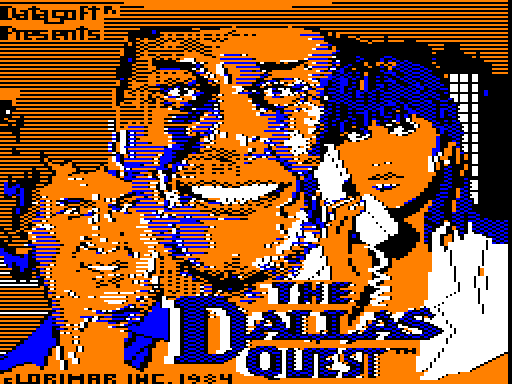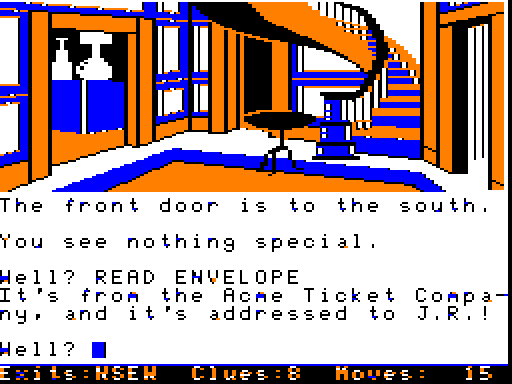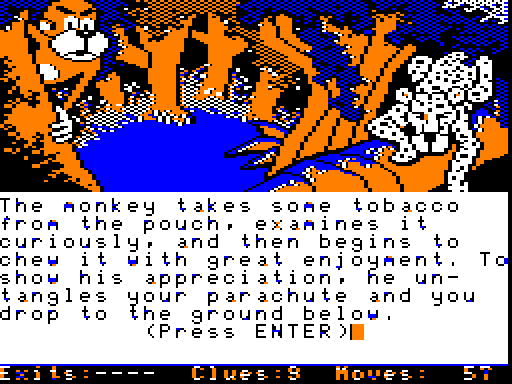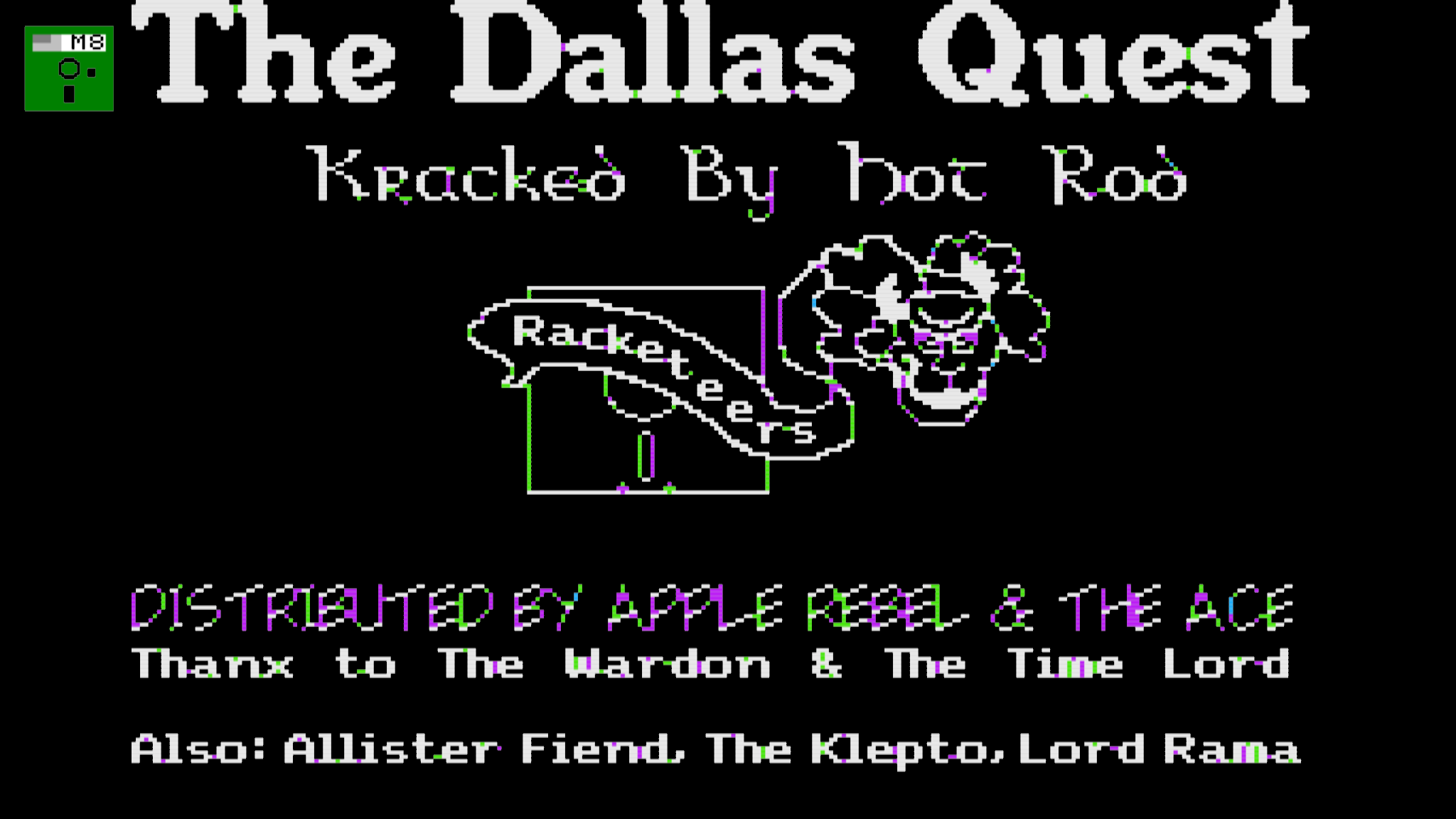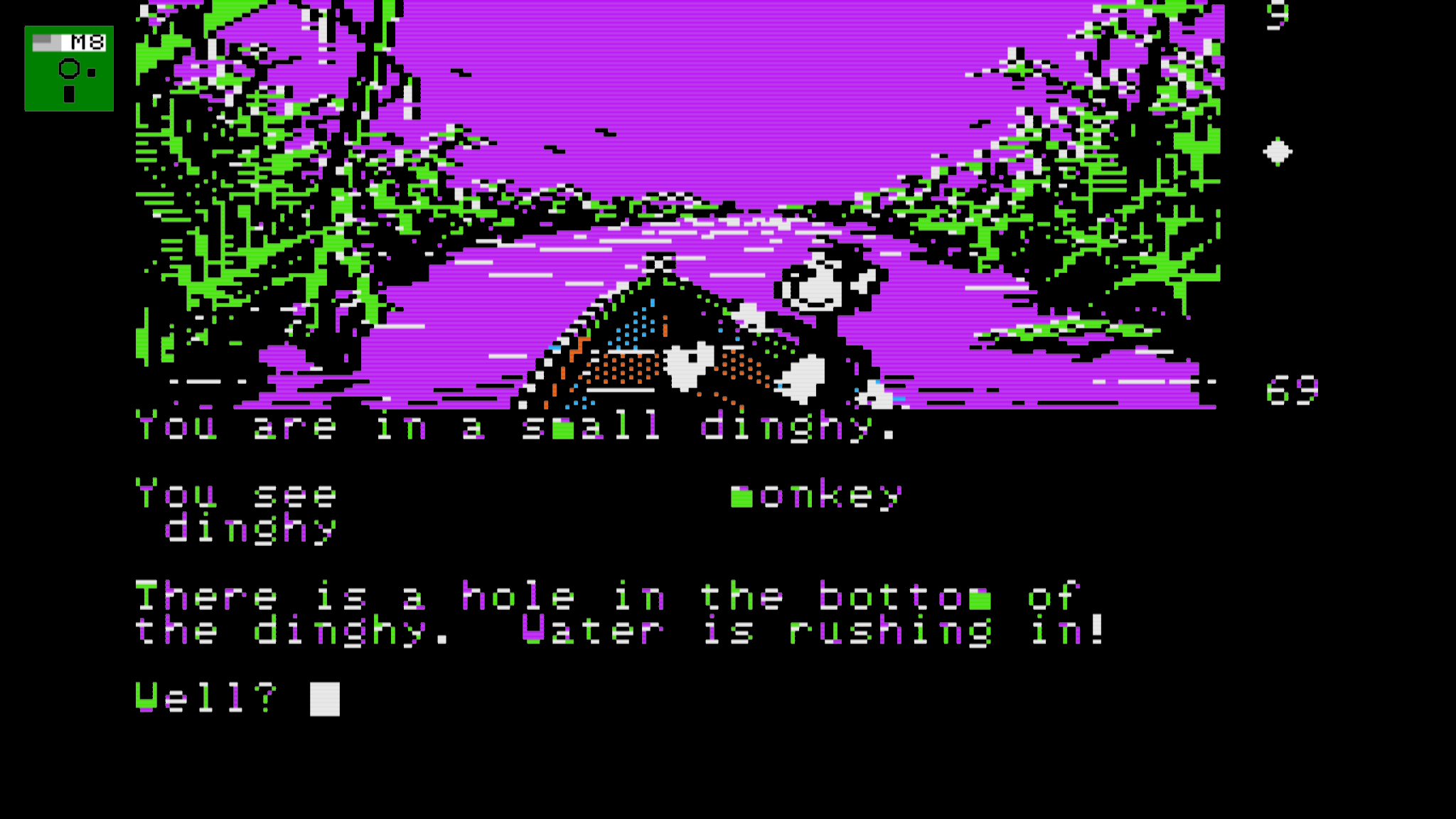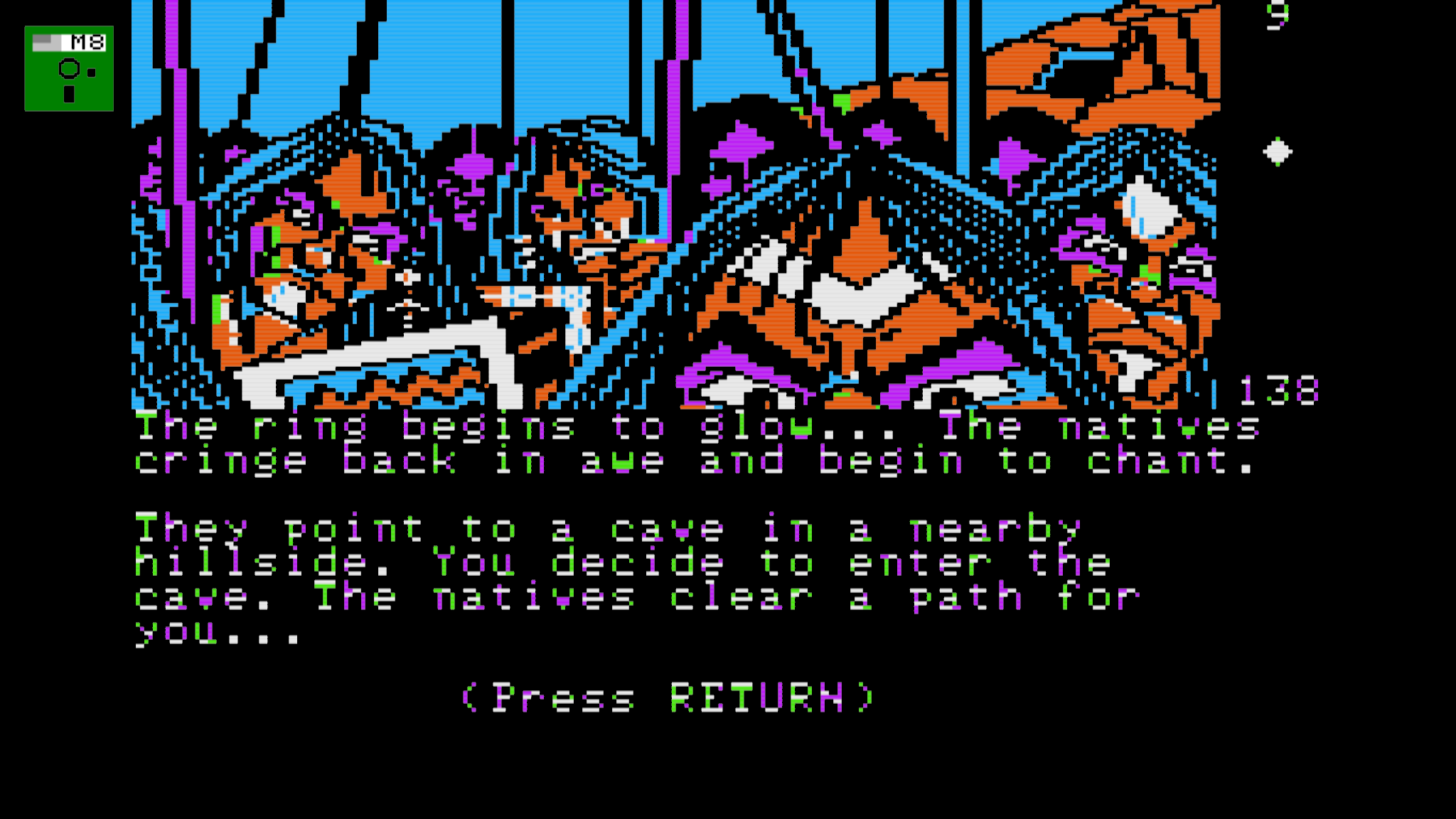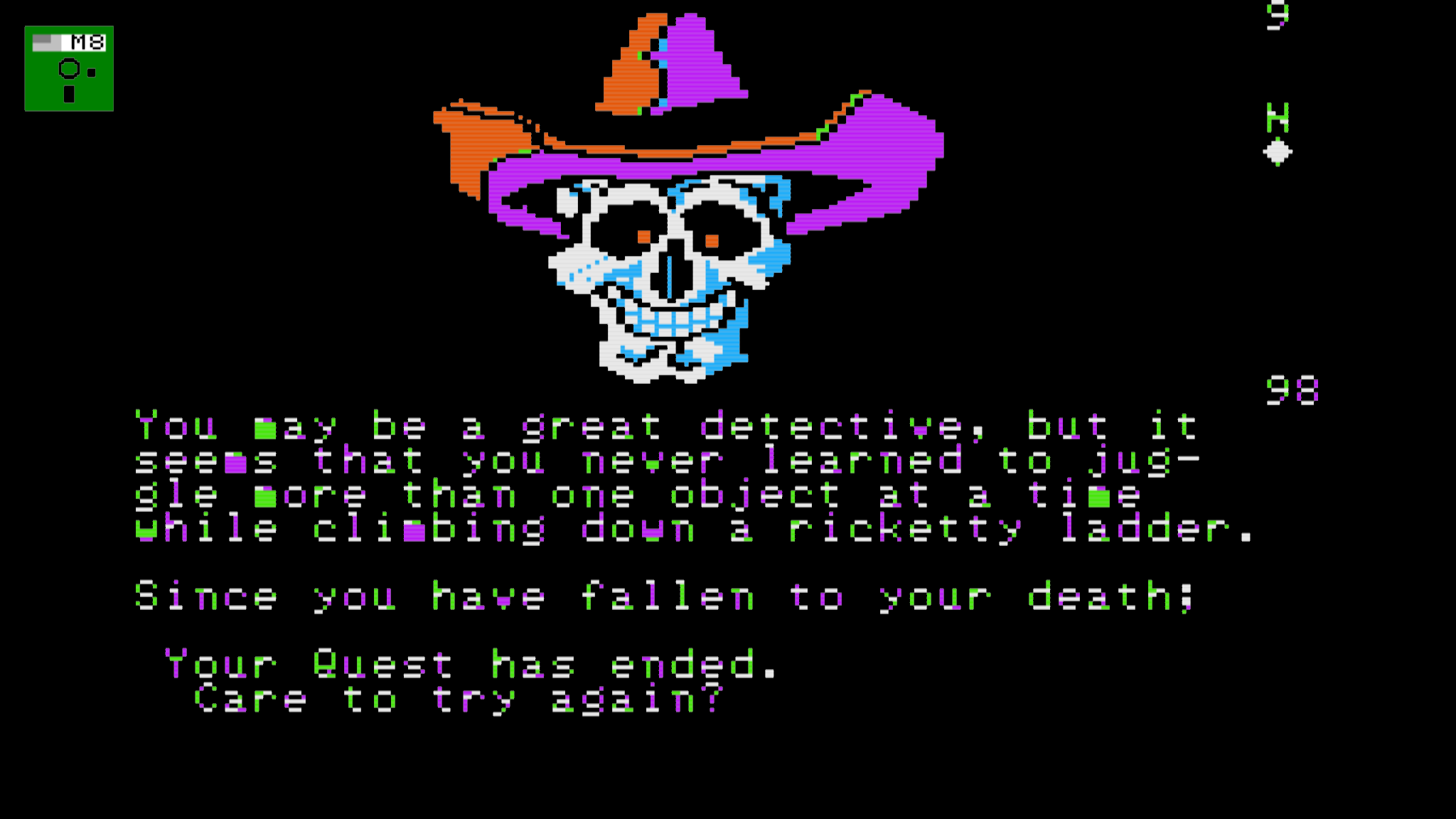Dallas Quest (Datasoft) - 1984
Series: Let's Adventure! A Journey into Adventure Games (1980-1999)This review is part of the Let's Adventure! series. See all reviewed games sorted by rating here.
- ← Codename: ICEMAN (Sierra On-Line) - 1989
- Dallas Quest (Datasoft) - 1984
- → Lure of the Temptress (Revolution Software) - 1992
Article 73 of 101 in this series.
The Dallas Quest is a graphic adventure game based on the television soap opera Dallas. The game was programmed by James Garon for the TRS-80 Color Computer and published by Tandy Corporation in 1984. It was the second game in the “Animated Adventure” series, following The Sands of Egypt, and uses the same split-screen display. Datasoft published versions for the Apple II, Atari 8-bit family, and Commodore 64 in the same year.
When a game is faithful to the poor writing and wildly implausible plot conventions of a soap opera, does that make it a bad game or an effective adaptation of its source material? In any case, this game situates you as a private investigator hired by Sue Ellen to find a map to hidden oil fields, in hopes to accumulate enough wealth to escape the sinister influence of J.R. Sue Ellen offers you a reward of $2 million for the map. You snoop around the grounds of the South Fork Ranch, superficially interacting with much-loved characters from the TV show and an assortment of extras from the animal kingdom. You must avoid J.R. who would like to put a stop to Sue Ellen’s plans. So far, so good.1
Your travels ultimately lead you to the jungles around Playa Peligro, in South America, where you overcome a series of obstacles by using various techniques, but mostly by doping a friendly monkey with tobacco – a firm reminder that we’re descending beneath even soap opera plot conflicts and sitting squarely in an early-‘80s text adventure game, with all of the internal logic-twisting that entails.1
Though my primary goal for this series I’m working through is to experience as many adventure games as possible, a secondary goal is to play them on as many different systems as possible. This is likely the only TRS-80 title I’ll have the opportunity to play, and getting up and running with trs80gp proved to be fairly straightforward.
The game seems to follow the characters from the “Dallas” soap opera, which I have no familiarity. Though I’d heard the “Who shot J.R” catch phrase when I was a kid, I didn’t actually know it could be attributed to this show until many years later.
Since I don’t know the characters or the show I’m going to gloss over this as the game really doesn’t do anything to introduce anyone. You sort of need to know who everyone is, but not having background or context doesn’t affect the gameplay much as there no character development as you progress.
I never had a TRS-80, but I can honestly say I was impressed with the quality of the graphics of this game - even if there only seemed to be a couple colours ever used. If you listen to the game’s intro music you can make out that this is definitely a rendition of the TV show’s intro music.
 After getting the monkey to free me from the parachute the game craps out
After getting the monkey to free me from the parachute the game craps out
Though I was enjoying the TRS-80 playthrough, I could only go so far before the game errored out. I wasn’t sure if this was a bad disk image, emulation problem or something else but I never ended up figuring it out so wound up starting over again using an Apple II emulator and ROM instead.
Switching over to the Apple II version of the game lets you once again experience the glory of the cracktro scene. Though not animated or interactive, I still appreciate the work that these programmers put into these digital taggings.
I might do a deeper dive into this topic in the future, but for now … back to trying to find this map that leads to an oil field …
This game is a lot goofier than I would have expected. Maybe this is what the writing on the show was like, but I have no real interest in finding out so feel free to let me know in the comments :)
Apparently the solution to at least three puzzles in this game involves giving the monkey that’s following you tobacco - so make sure you close the pouch after you give it to him so you don’t drop any. You’ll be needing that tobacco before you know it ;)
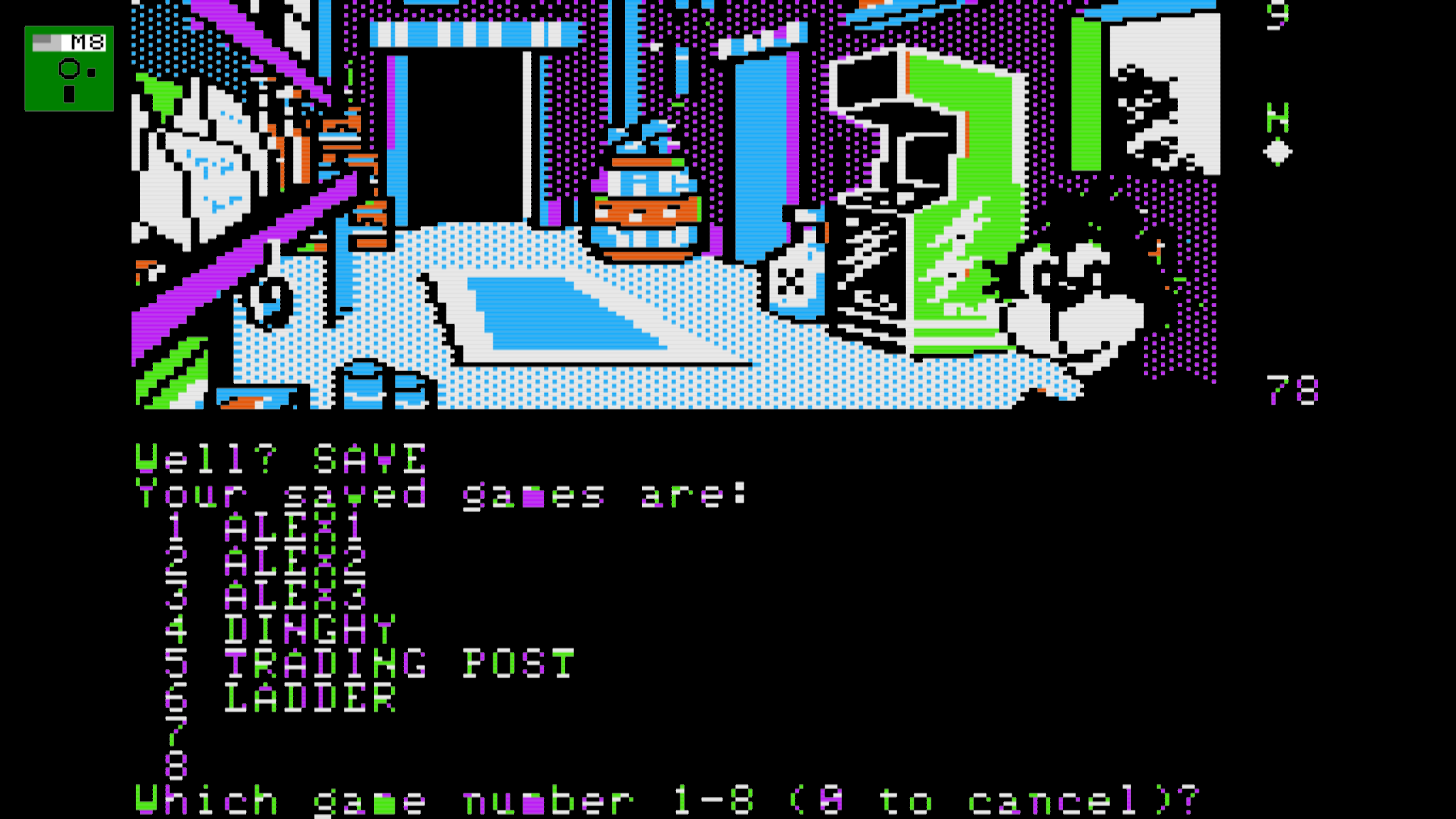 You’ll die occasionally, so make sure you remember to save
You’ll die occasionally, so make sure you remember to save
The layout of the game is actually pretty intuitive. The screen is split between the text parser and scene rendering, and you also have a clue counter, move counter and list of exits. The exits are useful as at a glance you know what direction(s) you can go to leave any screen.
You can type CLUE on most screens to get some help. I definitely found myself doing a “save-clue-load” loop on more than one occasion to move the game along.
I’m guessing that the complexity of the puzzles later in the game are an artifact of the time at which this game was made. Nothing you’re required to do is grounded in sound logic and you typically end up resorting to the clue system or the walkthrough.
Though I died … a lot … I actually didn’t find it to be nearly as bad as a Sierra Online game. The main challenge for me was that progressing through the game didn’t feel natural or intuitive.
It’s possible my lack of familiarity with the property the game is based on might have contributed to this, but honestly I think this is just an artifact of early 80’s game design.
The Dallas Quest is interesting in that it was an early adventure game based on a popular TV show (at the time). These types licensed tie-ins are usually reserved for movies (like Labyrinth: The Computer Game) so I guess that should speak to how popular this show must have been.
Other than the intro music and a couple segments where you have to play a bugle there isn’t much in the way of sound effects or music. The graphics are decent (for the time) and I had a lot of fun mucking around with a TRS-80 emulator - but I don’t think there’s a modern audience for this title.
Game Information
| Game | Dallas Quest |
| Developer | Datasoft |
| Publisher | Datasoft |
| Release Date | 1984 |
| Systems | Commodore 64, Apple IIe, Atari 8-bit, TRS-80 Color Computer |
| Game Engine |
My Playthrough
| How Long To Beat? | 2 hours |
| Version Played | TRS-80 via trs80gp / Apple II via microM8 |
| Notes |
Score
See here for a refresher on how we’re scoring these games.
| Graphics (10) | 3 |
| Sound (10) | 1 |
| Plot / Progression (25) | 8 |
| Characters / Development (15) | 3 |
| Gameplay / Experience (15) | 3 |
| Replayability (10) | 0 |
| Impact / Impression (10) | 2 |
| Bonus / Surprise (5) | 0 |
| 20% |
Note that I overhauled my scoring criteria in August of 2024, and the score above is the revised score for this game. See below for the original score based on the original scoring criteria.
| Atmosphere (20) | 8 |
| Story (25) | 9 |
| Experience (15) | 3 |
| Impact (10) | 2 |
| 31% |
Gallery
Footnotes
Description from Moby Games ↩︎ ↩︎2
